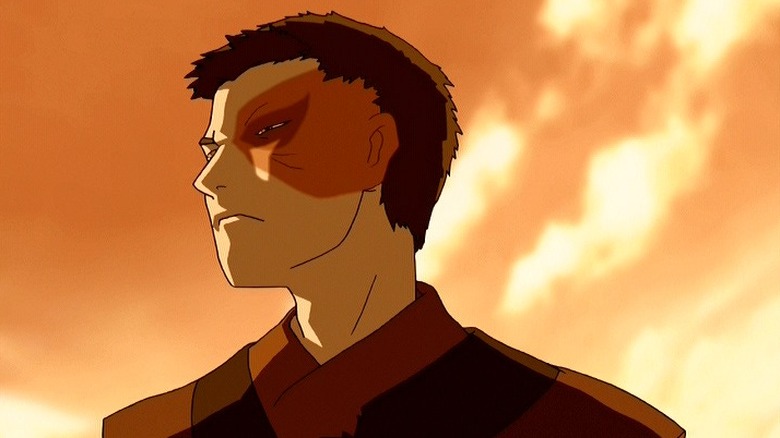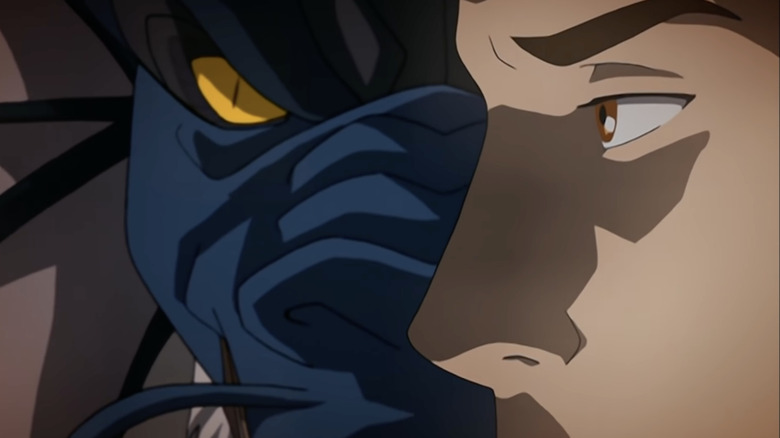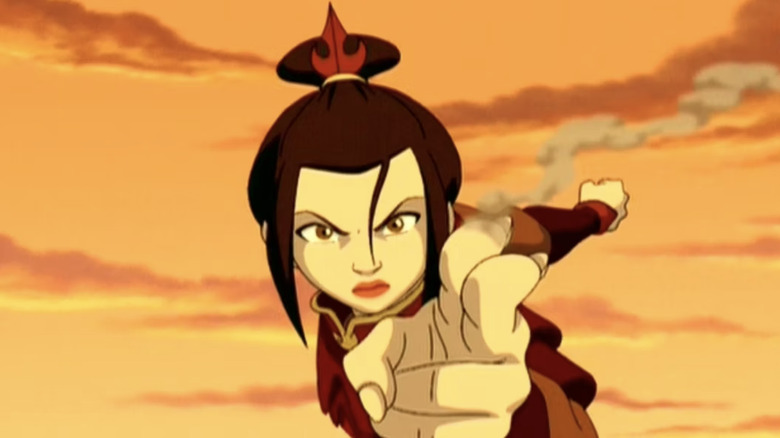Exploring Avatar: The Last Airbender's Zuko: His Scars Explained
In "Avatar: The Last Airbender," Fire Nation Prince Zuko's most distinguishing feature is the red burn scar on the left side of his face, given to him by his father, Fire Lord Ozai, after Zuko "dishonored" their family. Zukos' growth over the series manifests in acceptance of the scar. As he says in the season 2 finale ("The Crossroads of Destiny"), "I used to think this scar marked me. The mark of the banished prince cursed to chase the Avatar forever. But lately ... I've realized that I'm free to determine my own destiny, even if I'll never be free of my mark."
The scar isn't just there to remind Zuko of his pain or scare the young audience. There's some obvious symbolism too; Zuko literally has a good side and a bad side. It's like Two-Face from Batman (whether played by Tommy Lee Jones or Aaron Eckhart), where a bifurcated face reflects a split soul.
In the season 2 episode "The Earth King," Zuko has a nightmare where he, as an unscarred Fire Lord, meets the two warring parts of his soul as a pair of dragons, one blue and one red. When he awakes, he touches the scar to remind himself it's there and the extreme close-up conveys his pain. "Avatar" is deeper and more carefully made than the average kids' show, so pay attention to how the cinematography frames its subjects.
Then, in the season 3 episode "The Avatar and the Fire Lord," Zuko's cruel sister Azula says his brother should make sure his royal portrait captures "his good side" and the camera lingers on his scar. Which side is Zuko's good side? It's not as obvious as it seems.
Which side is Zuko's good side?
The obvious answer is that Zuko's right side, with his preserved pretty boy looks, is the good side and the one with the large scar is the bad side. However, I think it's the other way around; remember, there's a lesson in "Avatar" and Zuko's journey that one shouldn't judge a book by its cover. Zuko got his scar because he stood up for what was right, which his father punished as "weakness." The scar marks Zuko as different from his family (because he's really the most honorable of them all), and that's a good thing, even if it takes him a while to realize it.
By "The Earth King," Zuko's idealized image of himself doesn't have the scar (note how the evil, blue, Azula-voiced dragon is the one given an extreme close-up right next to Zuko's unscarred face, too). Remember, by this point, he hasn't reached self-actualization yet nor realized the mistake that earned him the scar wasn't a mistake. In the same dream, he imagines himself as Fire Lord, ruling in his father's image. Still, Zuko feels he must be like Ozai.
The Fire Lord's face is concealed until the season 3 premiere, "The Awakening," when Zuko returns home and greets his father. He looks just like Zuko, albeit older and without the scar. YouTube analyst Kato suggests this sets up Ozai as Zuko's foil. Continuing that line of thought, this point in the story is that this is Zuko at his worst; he's betrayed his uncle Iroh and helped Azula conquer the Earth Kingdom to get back in his father's good graces. The show reveals Ozai, and how similar he and Zuko are, as his son is in danger of becoming him.
Further Fire Nation symbolism
What cements my interpretation is the season 3 midpoint episode, "Day of The Black Sun," when Zuko finally turns against Ozai to join the Avatar. He takes off his princely armor while also casting off the costume of his father's perfect son; when he removes his crown and his hair unfurls, his scarred side is shown as if his good half has triumphed.
Then, Zuko confronts his father (watch it below). In most of the shots focusing on Zuko, his scar is visible, including when he says, "I'm going to join the Avatar." Now, when Zuko walks away from Ozai, his face is bifurcated and only the unscarred side is visible. Is the scene conveying that Zuko has also turned his back on his "bad side," or rather, how he won't let the pain his father inflicted shape his destiny anymore?
The facial symbolism in "Avatar: The Last Airbender" doesn't end there; Azula's perfectionism is braided with how her hair changes. She usually wears her hair in a tight bun, reflecting her self-control. When she shoots lightning for the first time, the blast "leaves one hair [on her head] out of place," and she's enraged; "Almost [perfect] isn't good enough." When she fights Katara in "The Crossroads of Destiny," Katara slices off a few stands of her hair with Waterbending, foreshadowing how Katara will ultimately defeat Azula in the finale, "Sozin's Comet." In that same episode, when Azula pulls a Daenerys from the end of "Game of Thrones," she cuts her own hair and leaves it messy with uneven bangs.
"Avatar: The Last Airbender" understood there's no real divide between narrative and visual storytelling; characterization and character design should complement each other like how the Avatar wields different elements in harmony. This fantastic craft is why the show endures to this day.


